Last updated on
Discover effective ways to eliminate cockroaches from your kitchen cabinets and maintain a clean, pest-free environment.
Cockroaches are one of the most disgusting and unwelcome guests in any home, especially when they invade the kitchen cabinets. Not only do they contaminate food and utensils, but they also carry diseases that can put your family’s health at risk.
Unfortunately, getting rid of these creepy crawlies can be a daunting task for many homeowners. But don’t worry – in this article, we’ll share some effective tips on how to get rid of cockroaches in kitchen cabinets once and for all! So grab a cup of coffee and let’s dive right in!
Key takeaways:
- Identify signs of a cockroach infestation in kitchen cabinets
- Understand common cockroach species and their behavior
- Prepare kitchen cabinets for treatment by removing items and cleaning surfaces
- Take safety precautions when using chemical solutions or natural repellents
- Implement daily cleaning habits and proper food storage to prevent infestations
What's Inside
Introduction
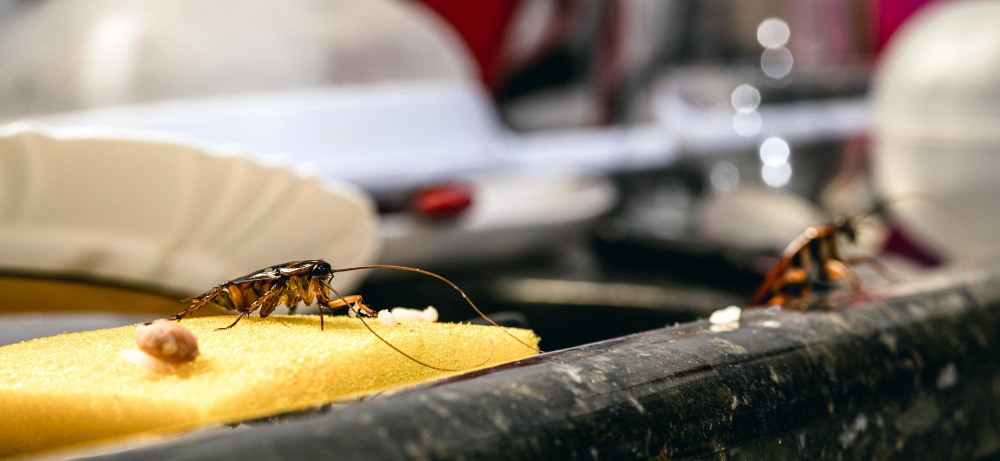
Cockroaches are one of the most common household pests, and they can be a real nuisance when they invade your kitchen cabinets. These creepy crawlies not only contaminate food but also pose serious health risks to you and your family.
Cockroach infestations can quickly spiral out of control if left unchecked, so it’s essential to take action as soon as possible.
In this article, we’ll explore some effective ways on how to get rid of cockroaches in kitchen cabinets. We’ll cover everything from identifying cockroach species and preparing the area for treatment to using natural repellents or chemical solutions for eradication.
Identifying Cockroach Infestations
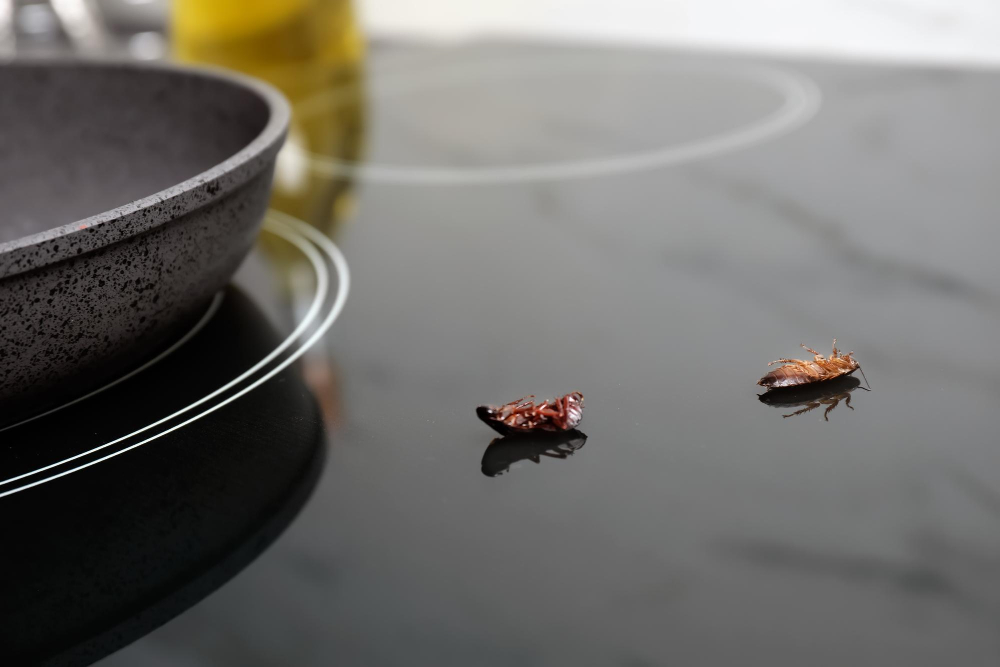
Cockroaches are nocturnal creatures, so you may not see them during the day. However, there are some telltale signs that can indicate their presence.
One sign of a cockroach infestation is seeing live or dead roaches around your kitchen cabinets or countertops. You may also notice small brown droppings that resemble coffee grounds near food sources and water areas.
Another indication of an infestation is finding egg cases or shed skins around your home. These casings can be found in dark corners, crevices, and cracks where roaches like to hide.
If you suspect a cockroach problem but haven’t seen any physical evidence yet, try placing sticky traps near potential hiding spots such as under sinks and behind appliances overnight to catch any wandering pests.
Common Cockroach Species

There are several species of cockroaches, but the most common ones found in homes include German cockroaches, American cockroaches, Oriental cockroaches and Brown-banded Cockroach.
German Cockroach: This is one of the most prevalent species and is known for its small size (about 1/2 inch long) with light brown or tan coloration. They prefer warm and humid environments such as kitchens, bathrooms or laundry rooms.
American Cockroach: Also known as water bugs or palmetto bugs due to their affinity for damp areas like basements and sewers. These roach species have reddish-brown bodies with wingspan up to 3 inches long.
Oriental Cockroach: Often referred to as black beetles because they have shiny black bodies that measure about an inch long on average. They tend to live in cool damp places like drains, pipes under sinks etc.,.
Brown-Banded Roach – These roach types are smaller than other varieties measuring only around half an inch-long; they’re identified by two lighter bands across their dark brown body which makes them easy-to-spot pests.
Preparing the Kitchen Cabinets
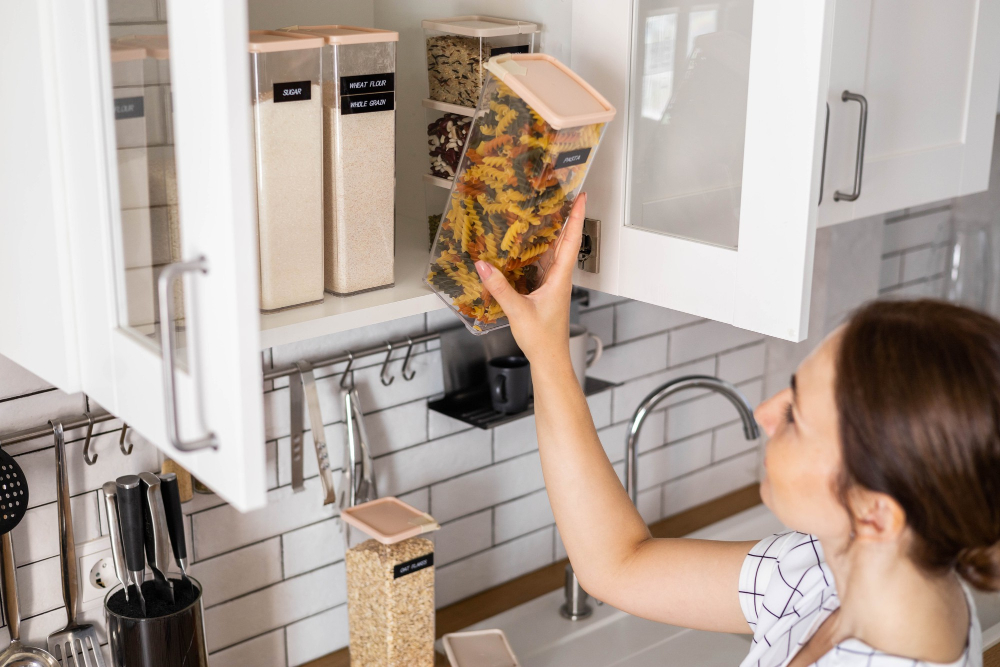
This step is crucial because it helps you identify the extent of the infestation and determine which treatment method will be most effective. To begin with, remove all items from your cabinets and drawers, including food containers, utensils, dishes or anything else that might attract roaches.
Next up is cleaning – use a vacuum cleaner or a broom to sweep away any crumbs or debris that may have accumulated in corners and crevices of your cabinet shelves. You can also wipe down surfaces with warm soapy water before rinsing them thoroughly.
Once everything has been removed and cleaned out of sight in preparation for treatment methods such as traps or baits (which we’ll discuss later), make sure there are no leaks under sinks where moisture could accumulate – this attracts roaches like nothing else! Finally seal off any cracks around pipes leading into walls using caulk gun if necessary; these tiny openings provide easy access points for pests looking for shelter inside homes.
Safety Considerations

Cockroaches can carry harmful bacteria and diseases that can be transmitted to humans through contact or ingestion of contaminated food. Therefore, it’s essential to wear gloves and a mask when handling chemicals or cleaning solutions.
Make sure that all the products you use are safe for your family members and pets. Read the labels carefully before purchasing any insecticides or repellents.
If you have young children at home, keep them away from the kitchen cabinets during treatment periods as they may accidentally ingest harmful substances.
Empty and Clean the Cabinets

This will help eliminate any food sources or hiding places for the pests. Start by removing all items from the cabinets, including dishes, utensils, and food containers.
Next, use warm soapy water to wipe down all surfaces inside the cabinet. Pay special attention to corners and crevices where cockroaches may be hiding.
You can also use a vacuum cleaner with an attachment hose to remove any crumbs or debris that may have accumulated.
After cleaning out your kitchen cabinets completely, it’s important to keep them organized going forward. Avoid leaving dirty dishes in the sink overnight as this can attract roaches looking for their next meal.
Daily Cleaning Habits
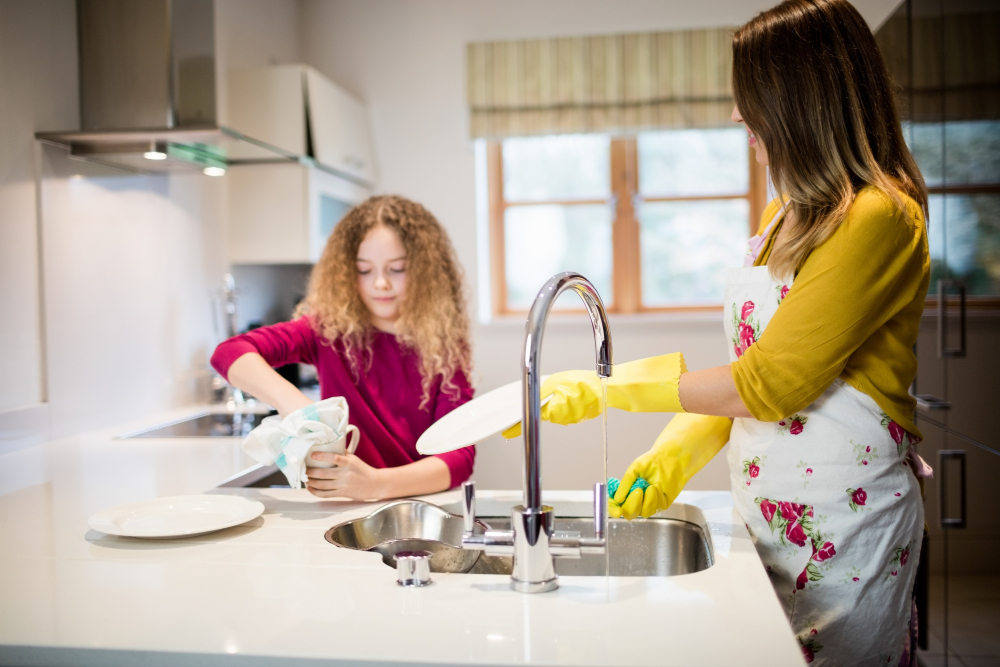
Cockroaches are attracted to food debris, spills, and crumbs left behind on countertops or inside cabinets. Therefore, it’s essential to develop daily cleaning habits that will help you keep your kitchen free from these pests.
Start by wiping down all surfaces with a damp cloth or sponge after each meal preparation or snack time. Make sure you pay attention to corners and crevices where crumbs tend to accumulate.
Also, avoid leaving dirty dishes in the sink overnight as they can attract cockroaches looking for leftover food particles. Instead, wash them immediately after use and store them away neatly.
Lastly, take out the trash regularly – at least once a day – especially if there are any food scraps inside it. Keep garbage cans tightly sealed with lids so that roaches cannot access their contents.
Sealing Cracks and Holes
Therefore, it’s essential to seal any openings in your kitchen cabinets that could serve as entry points for these pests. Start by inspecting the cabinets thoroughly, paying close attention to areas where pipes or wires enter the cabinet space.
Use a caulking gun or silicone sealant to fill any gaps around plumbing fixtures, electrical outlets, or other potential entry points. You can also use weather stripping tape along door frames and window sills.
By sealing up these small openings in your kitchen cabinets, you’ll make it much more difficult for cockroaches (and other pests) to gain access inside.
Eliminating Water Sources
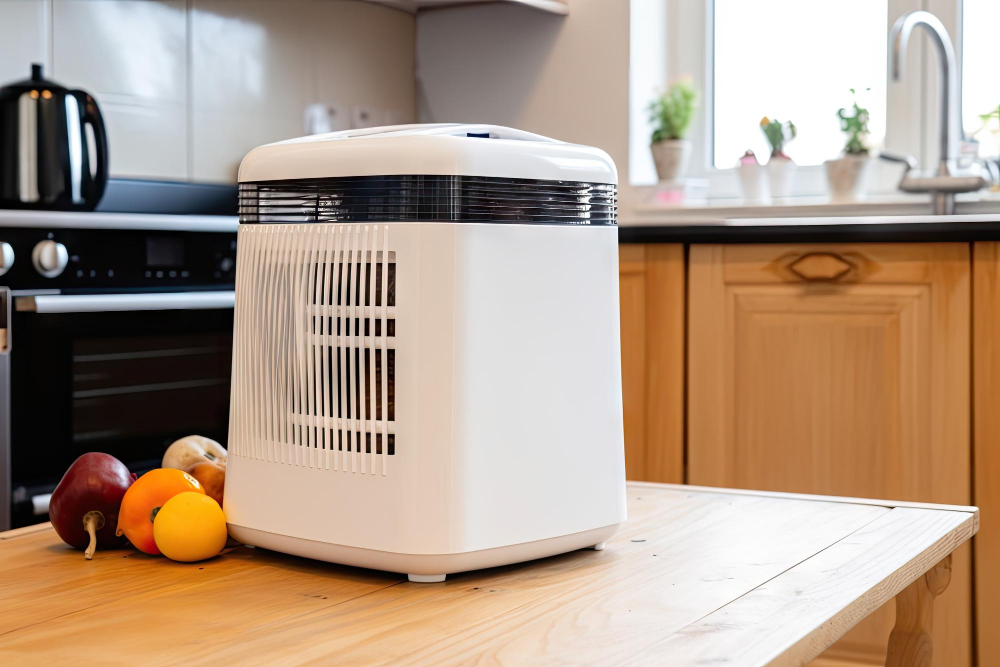
Therefore, eliminating any sources of water in your kitchen is crucial to get rid of these pests. Start by fixing any leaks or drips under the sink or around pipes that may be providing a source of moisture for cockroaches.
Also, make sure you wipe down all surfaces in the kitchen regularly and keep them dry. Don’t leave standing water on countertops or dishes overnight as this will attract cockroaches looking for a drink.
Another way to eliminate water sources is by using dehumidifiers in areas where there’s high humidity such as basements and crawl spaces beneath your home’s foundation. By reducing moisture levels indoors, you’ll create an environment that’s less hospitable to roaches.
Proper Food Storage

Keep all dry goods in airtight containers with tight-fitting lids. This includes cereals, grains, and baking supplies like flour and sugar.
Avoid leaving any open packages of food on the shelves or countertops as they can attract cockroaches quickly. Store opened bags of snacks such as chips or crackers in resealable plastic bags.
Make sure that you don’t leave dirty dishes out overnight because they can also attract cockroaches looking for a meal. Clean up spills immediately and wipe down counters regularly to prevent crumbs from accumulating.
Removing Clutter

They love to hide in dark, damp places and feed on any available food sources. To eliminate these pests from your kitchen cabinets, you need to remove all clutter and unnecessary items.
Start by taking everything out of the cabinets and sorting them into three piles: keep, donate/sell or throw away. Be ruthless when deciding what to keep – if you haven’t used it in a year or more, chances are you won’t miss it.
Once you’ve sorted through everything, wipe down each item with warm soapy water before returning them back into the cabinet. This will help get rid of any lingering smells that may attract cockroaches.
Natural Repellents
These remedies are not only effective but also safe for your family and pets. Some natural repellents that you can use include essential oils, such as peppermint, eucalyptus, and lavender oil.
You can mix a few drops of these oils with water and spray the solution inside the cabinets.
Another natural remedy is diatomaceous earth (DE), which is made from fossilized algae shells. DE works by dehydrating insects’ exoskeletons when they come into contact with it, causing them to die within 48 hours.
Bay leaves are another excellent natural repellent that you can use in your kitchen cabinets. Simply place some bay leaves inside the cabinet corners or on shelves where cockroaches tend to hide.
Cockroaches hate citrus smells; therefore, placing lemon peels or orange peels around your kitchen will help repel them naturally.
Chemical Solutions

There are several types of insecticides available on the market that can effectively eliminate these pests. However, it’s important to choose a product that is safe for indoor use and follow the instructions carefully.
One popular option is boric acid powder, which can be sprinkled inside cabinets or mixed with water as a spray. Boric acid works by damaging the roach’s digestive system when ingested and also dehydrating their exoskeletons when they come into contact with it.
Another effective chemical solution is an insecticide spray containing pyrethroids or neonicotinoids. These products kill cockroaches on contact but may require multiple applications for complete elimination.
When using any type of chemical solution, always wear protective gear such as gloves and a mask to avoid inhaling fumes or getting chemicals on your skin. Keep children and pets away from treated areas until they have dried completely.
Traps and Bait
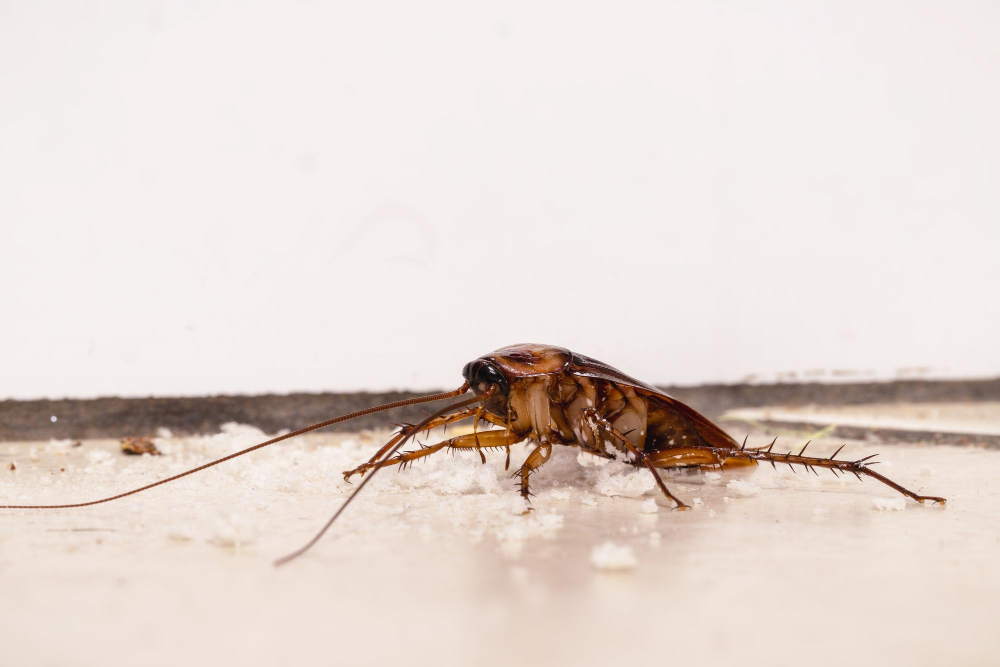
Traps work by luring the roaches with a bait that they cannot resist, then trapping them inside the device. There are different types of traps available on the market, including sticky traps and pheromone-based traps.
Baits work by attracting cockroaches to consume poisoned food or liquid which will eventually kill them. Baits come in various forms such as gels, granules or stations.
When using either method it is important to place them strategically around your kitchen cabinets where you have seen evidence of infestation such as droppings or egg cases. Be sure not to place these devices near areas where food is prepared or consumed.
It’s also essential that you follow instructions carefully when setting up baits and traps since improper use can be dangerous for both humans and pets alike. Remember that while these methods can be effective at eliminating existing populations, they do not address underlying causes like poor sanitation practices which may lead to future infestations if left unaddressed.
Insect Growth Regulators
Unlike other pesticides, IGRs do not kill adult roaches but instead prevent them from reproducing by disrupting their development process. This means that even if some roaches survive the treatment, they won’t be able to lay eggs and produce more offspring.
IGRs come in different forms such as sprays, baits or traps and can be used alone or in combination with other insecticides for maximum effectiveness. They work by mimicking hormones found in insects’ bodies which interfere with their normal growth patterns.
One advantage of using IGRs is that they have low toxicity levels compared to traditional insecticides making them safer for humans and pets while still being effective against cockroaches.
However, it’s important to note that IGRs take time to work since they target the reproductive cycle rather than killing on contact like some other pesticides. It may take several weeks before you start seeing results so patience is key when using this method.
Using Cockroach Traps
They work by luring cockroaches with bait, then trapping them inside the device. There are different types of traps available in the market, including sticky traps and pheromone-based ones.
To use a cockroach trap, place it near areas where you have seen roaches or suspect their presence. Make sure to follow the manufacturer’s instructions for placement and usage carefully.
One advantage of using cockroach traps is that they do not require any chemicals or pesticides, making them safe for households with children and pets. However, keep in mind that they may not be as effective as other methods if you have a severe infestation.
In combination with other techniques such as daily cleaning habits and sealing cracks around your cabinets’ edges can help maximize their effectiveness.
Applying Gel Baits
These baits contain a slow-acting poison that the roaches ingest and carry back to their nests, effectively eliminating the entire colony. To apply gel bait, start by cleaning out your cabinets thoroughly and removing any clutter or debris that could attract roaches.
Next, choose a high-quality gel bait product from your local hardware store or online retailer. Follow the instructions carefully for application – typically you will need to place small dots of gel along cabinet edges and corners where cockroaches are likely to travel.
Be sure not to use too much bait as this can actually deter cockroaches from eating it altogether! Also, keep in mind that it may take several days for the poison in these baits to take effect fully so be patient with results.
Remember always read labels carefully before using any pest control products inside your home.
Diatomaceous Earth or Boric Acid
Diatomaceous earth is a fine powder made from the fossilized remains of tiny aquatic organisms called diatoms. It works by dehydrating the exoskeletons of insects, causing them to die within 48 hours.
Boric acid is another natural substance that can be used to eliminate cockroaches. It’s a white powder that damages their digestive system when ingested, leading to death within several days.
To use either product effectively, apply it directly into cracks and crevices where roaches hide using an applicator brush or bulb duster. Be sure to wear gloves and avoid inhaling the dust during application.
While these methods may take longer than chemical solutions or traps/baits, they are safe for humans and pets if used correctly.
Treating Cracks and Crevices
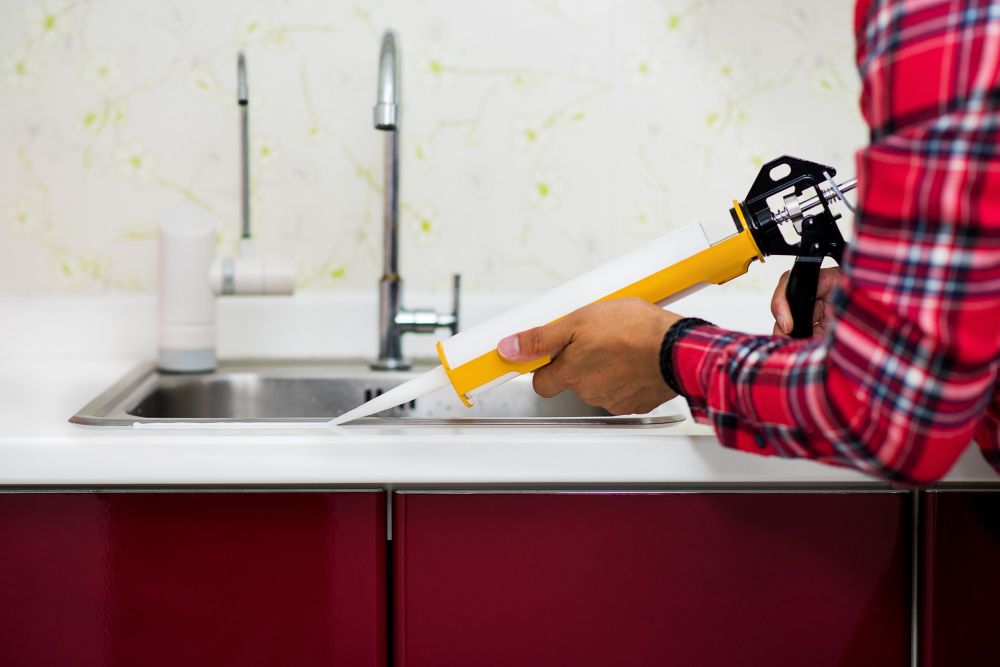
However, sealing these entry points can help prevent future infestations. Start by inspecting your kitchen cabinets thoroughly for any gaps or holes that cockroaches could use as an entry point.
Once you have identified the problem areas, use a caulking gun to seal up any openings around pipes or electrical outlets. You can also apply weather stripping around doors and windows to keep pests out.
If you notice cracks in the walls or floors near your kitchen cabinets, fill them with expanding foam insulation or another appropriate filler material. This will not only prevent cockroach access but also improve energy efficiency by reducing drafts.
Remember that even tiny gaps can provide enough space for roaches to enter your home; therefore it is essential always be vigilant when looking out for potential entry points.
Preventative Measures

Here are some tips on how to keep your kitchen roach-free:.
1. Regularly clean and sanitize the cabinets: Wipe down the shelves and surfaces with a disinfectant solution at least once a week.
2. Store food properly: Keep all food in sealed containers or bags, especially dry goods like cereal, flour, and sugar.
3. Eliminate water sources: Fix any leaks under sinks or appliances that may provide moisture for cockroaches.
4. Seal cracks and crevices: Use caulk or foam sealant to close up any gaps around pipes or electrical outlets where roaches can enter.
5. Remove clutter: Get rid of piles of newspapers, cardboard boxes, grocery bags – anything that could serve as hiding places for pests.
When to Call a Professional
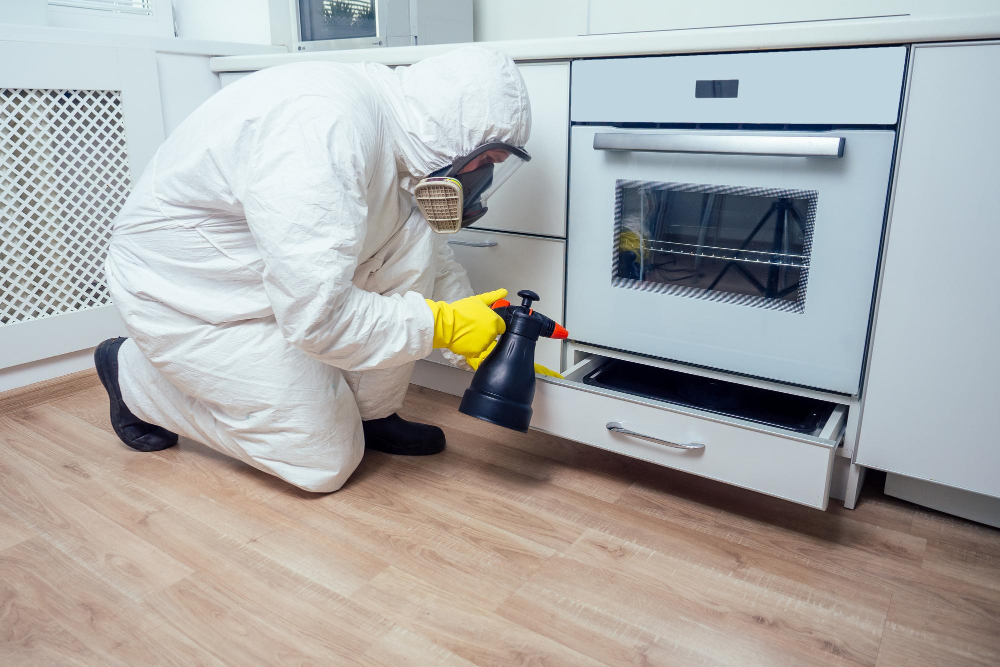
A licensed exterminator has access to more potent insecticides and equipment that can effectively eliminate even the most stubborn infestations.
If you have young children or pets at home, using chemical solutions on your own may not be safe. Professional pest control companies use eco-friendly products that are less harmful but equally effective in eliminating pests.
Don’t wait until the problem gets out of hand before calling for help. If you notice an increasing number of cockroaches despite your efforts or see them during daytime hours (when they’re usually hiding), it’s best to seek professional assistance immediately.
Remember: prevention is always better than cure when it comes to dealing with pests like cockroaches.
Professional Pest Control Assistance
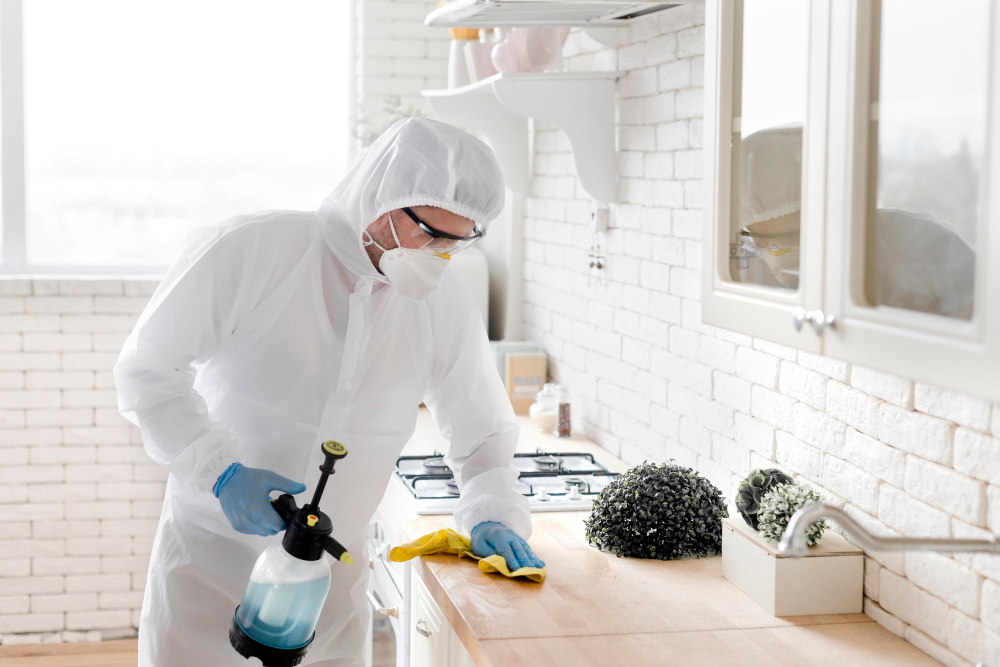
Pest control experts have access to specialized equipment and chemicals that are not available over-the-counter. They also have extensive knowledge on how to identify the type of cockroach infestation you’re dealing with and provide tailored solutions for your specific situation.
Professional pest control services can help eliminate roaches quickly, safely, and effectively without causing harm or damage to your home or family members. They will inspect every nook and cranny of your kitchen cabinets, identify potential entry points for pests into the house, treat affected areas with appropriate insecticides or baits while ensuring safety measures are taken.
Moreover, they will advise on preventative measures that homeowners should take after treatment is completed so as not only eradicate current infestations but also prevent future ones from occurring.
Maintaining a Roach-Free Kitchen

This means adopting good hygiene practices and taking preventative measures to keep these pests at bay. One of the most effective ways to prevent cockroach infestations is by keeping your kitchen clean and free of clutter.
Make sure you wipe down countertops, sweep or vacuum floors regularly, and wash dishes promptly after use.
Sealing cracks and holes in walls or cabinets can help prevent future infestations by eliminating potential entry points for roaches. You should also fix any leaky pipes or faucets as soon as possible since standing water attracts these pests.
Consider using natural repellents such as peppermint oil or vinegar spray around the perimeter of your kitchen cabinets to deter cockroaches from entering in the first place.
Tips for Cockroach Elimination and Prevention
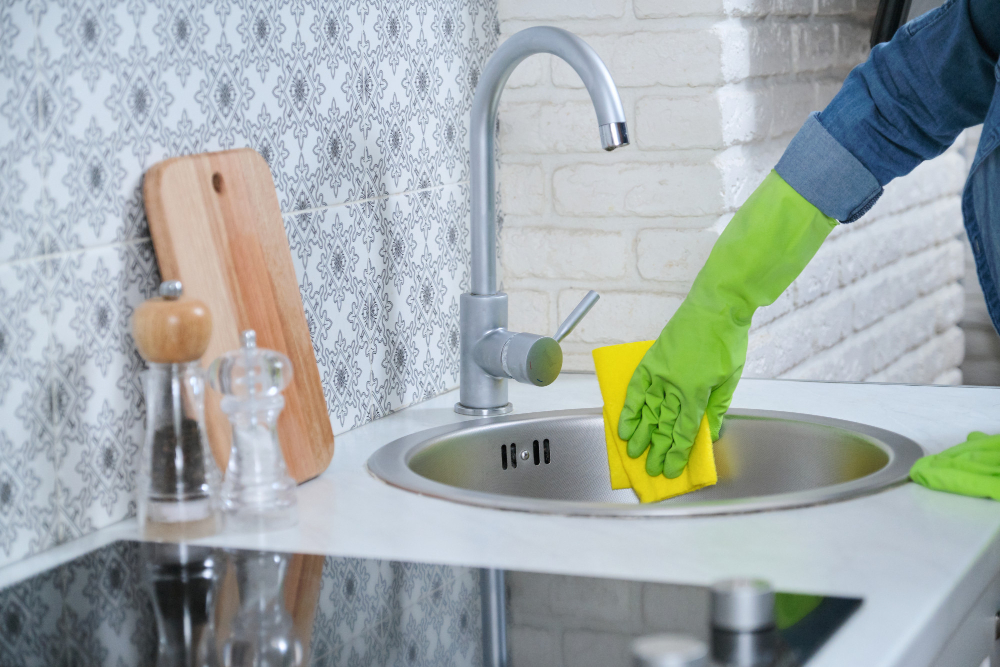
Here are some tips for cockroach elimination and prevention:.
1. Keep your kitchen clean: Regularly wipe down counters, sweep the floors, and wash dishes promptly.
2. Store food properly: Use airtight containers for dry goods like cereal and pasta.
3. Seal cracks and crevices: Use caulk or weather stripping to seal any gaps around windows or doors where roaches can enter.
4. Eliminate water sources: Fix leaky pipes or faucets in the kitchen area as soon as possible.
5. Reduce clutter: Roaches love hiding in piles of paper bags, cardboard boxes, old newspapers etc., so keep these items away from the kitchen area.
6. Use natural repellents such as peppermint oil which is known to repel roaches due its strong scent.
Conclusion

By identifying the type of infestation, preparing your cabinets for treatment, and using effective methods such as natural repellents or chemical solutions, you can successfully eliminate these pests from your home. However, it’s important to remember that maintaining a clean environment is key to preventing future infestations.
Regular cleaning habits like wiping down surfaces and sealing cracks will go a long way in keeping roaches at bay.
If all else fails or if you’re dealing with an extensive infestation that seems beyond your control – don’t hesitate to call professional pest control services for assistance.
By following the tips outlined in this article and staying vigilant about cleanliness practices around the house – you’ll be able to keep those pesky cockroaches out of sight (and hopefully out of mind) once and for all!.
FAQ
Why are there roaches in my kitchen cabinets?
Answer: Roaches are in your kitchen cabinets because they need moisture, food, and dark, damp areas to survive, which can be found near leaky pipes under the sink.
What attracts cockroaches to kitchen cabinets and how can I prevent them from coming in?
Cockroaches are attracted to kitchen cabinets due to food crumbs and spills; to prevent them, maintain cleanliness by sealing food containers, wiping surfaces, and fixing leaks.
What are the most effective methods for removing cockroaches from my kitchen cabinets?
The most effective methods for removing cockroaches from kitchen cabinets involve using baits, boric acid, diatomaceous earth, insecticides, and maintaining cleanliness.
Are there any natural or eco-friendly solutions to eliminate cockroaches from kitchen cabinets?
Answer: Yes, using a natural mixture of baking soda and sugar can help eliminate cockroaches from kitchen cabinets.




